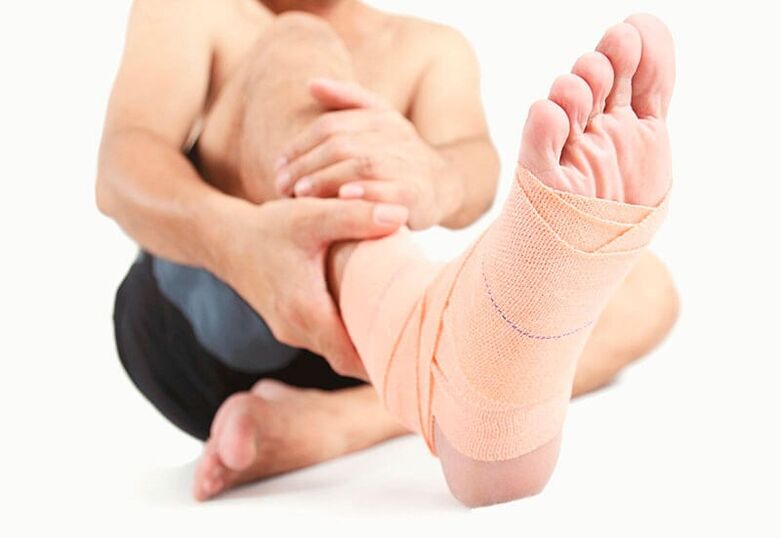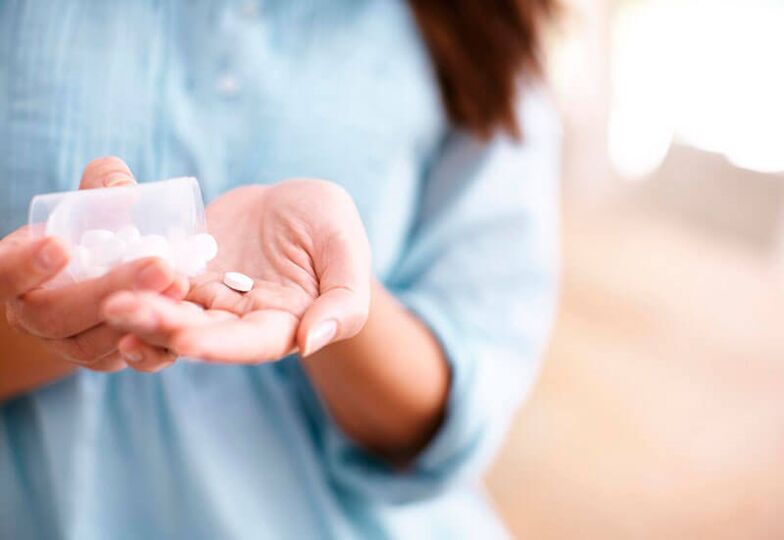Any pain in the human body is a source of trouble and suffering. The usual daily work is already becoming an impossible task.
<1_img_centerxx>Joint pain is a common problem aimed at specialists. By means of a diagnosis, the cause of the onset of pain is investigated. Physical activity often becomes a source of unpleasant sensations, especially when a body not used to sport is loaded.
Such pains disappear after a while, the body just needs to rest. However, not all problems go away so quickly. There are a number of diseases that are accompanied by pain throughout the body for a long time.
Joints all over the body are injured - causes
Rheumatism
This disease can manifest itself in two forms:
- Monoarthritis, when only one area is affected.
- Polyarthritis, when many areas are affected.
Symptoms include pain and swelling in the affected area. At one point, the pain does not spread to all the joints in the body. Rheumatism gradually moves to the large joints. Mainly on the shoulder, elbow, knee, ankle and hip.
Good to know!The hands and feet are usually not affected by rheumatism. Such a disease often appears after a sore throat.
Rheumatoid arthritis
The onset of joint pain may indicate the onset or progression of rheumatoid arthritis. The risk group includes people over 40. Rarely, such a disease affects children and adolescents, it has a slightly different name - juvenile rheumatoid arthritis.
To note!In addition to pain, a person feels stiffness when moving, and swelling also appears, especially in the morning. Pain in all joints at once most often appears either at the onset of the disease or during an exacerbation.
Osteoarthritis
Osteoarthritis triggers pathological processes in the human body that alter the cartilage in a dystrophic manner. The disease affects the elderly.
Osteoarthritis spreads slowly throughout the body, the pain first appears in one place and lasts for several seconds. If you do not start treatment on time, the disease can be started, which is fraught with more complex and long-term treatment.
Overworked joints
Strenuous physical activity can cause the joints to overtrain. After a few hours, unpleasant sensations appear in the joints, especially when overloaded places are in motion. Basically, the lower limbs suffer, because it is on this part that most of the loads come.
To note!It is advisable to rest your body for a few days so that the pain subsides. To enhance the effect, you can use warming ointments. But if the symptoms persist, then it is necessary to seek the advice of a doctor, since more serious damage is possible.
Autoimmune diseases
These diseases are characterized by a pathological condition in which antibodies are formed that destroy connective tissue. Often times, cartilage is also involved in this process, as it is connective tissue.
These diseases include:
- lupus erythematosus;
- vasculitis;
- ankylosing spondylitis;
- scleroderma.
To note!These diseases affect most of a person's joints. In addition, a rash appears on the face, bleeding increases, and the digestive tract is disturbed.
Blood diseases
Blood diseases can damage the bone marrow, resulting in pain in the joints.
Common blood diseases include:
- Acute leukemia.
- Multiple myeloma.
- Myeloid leukemia.
Multiple myeloma affects the ribs, pelvic bones, and the spine. In this case, very sharp pains occur. At an advanced stage, it reaches the destruction and fragility of the bones. In this case, the bones break very easily. The disease requires serious and long-term treatment in the oncology department.
To note!Acute leukemia also brings discomfort to the body. The lymph nodes and the spleen are also enlarged. The temperature rises and weakness appears.
Other reasons
- Disorders of the gastrointestinal tract and hormonal disturbances.
- Bone tuberculosis.
- Diabetes.
- Warts and papillomas.
- Tick bite.
How do the symptoms and signs of joint pain manifest?

Symptoms appear in different ways, depending on the cause of the disease and its stage. One of the prominent symptoms is loss of joint mobility and swelling in this area.
Most often, the pain is felt in the fall and spring, when the body is particularly weak. During the day, a person may not be disturbed by anything, but as soon as he takes a lying position, unpleasant sensations immediately appear. This is due to the fact that the joints "get tired" during the day, and the horizontal position worsens blood circulation.
Good to know!Such symptomatology suggests that it is necessary to go to the doctor. Once the diagnosis has been made, it will be possible to identify the affected areas and correctly prescribe the treatment.
Diagnostic methods
The specialist usually prescribes a complete examination of the patient with the help of laboratory and instrumental means:
- Blood and urine analysis.
- Blood chemistry. To identify infectious antigens, as well as to exclude cancer.
- Bone marrow puncture.
- computed tomography.
- Neuromyography.
To note!In addition, you may need to see a rheumatologist, hematologist, and neurologist.
Treatment of joint pain
Conservative therapy

The mainstay of all treatment is medication. Each of them is prescribed by a doctor based on the diagnosis.
The following drugs are used:
- Detoxification.
- Antipyretic.
- With anti-inflammatory and analgesic effects.
- Antibiotics
- Antiviral.
To note!Specific diseases, such as blood diseases, cancer problems, vascular pathologies and osteoporosis, are the subject of more severe treatments.
Physiotherapy
The therapy is used for trauma, tissue inflammation, osteoarthritis, and some forms of arthritis. Other diseases prohibit physical therapy because it can be harmful.
Physiotherapy is contraindicated for:
- tumors;
- blood diseases;
- connective tissue diseases.
Physiotherapy treatments include:
- UHF warm-up.
- Mud and paraffin applications.
- Magnetotherapy.
- Shock wave therapy.
- Electrophoresis.
Folk remedies
Before choosing folk remedies, you need to discuss them with your doctor. Not all illnesses can be treated this way.
The most common folk remedies are:
- Golden mustache dye.
- Cabbage leaves.
- Ointment based on petroleum jelly and herbs.
- Conifer extract.
- Collection of chamomile, hop cones, St. John's wort and calendula.
- Lilac tincture.
Preventative measures

- Monitor your health, boost your immunity, and avoid infections and colds.
- To live an active life. But that does not mean that you have to exercise intensively, thereby straining your body. Enough regular moderate exercise.
- Concentrate on foods that contain calcium.
- Drink at least two liters of water per day.
Remember:that human health depends primarily on itself. A healthy body requires constant work on itself. This work consists of observing the elementary rules of life. Harmony with your body allows you to always be cheerful, cheerful, and cheerful.
































